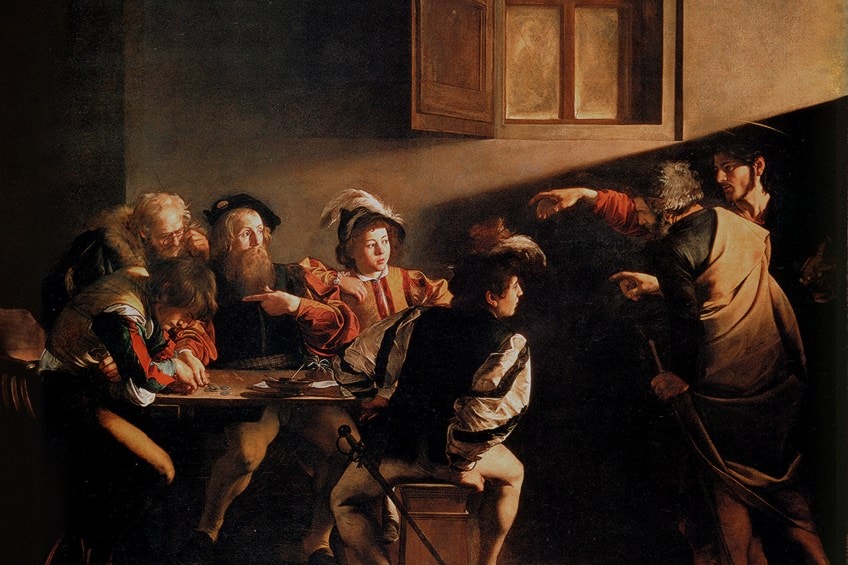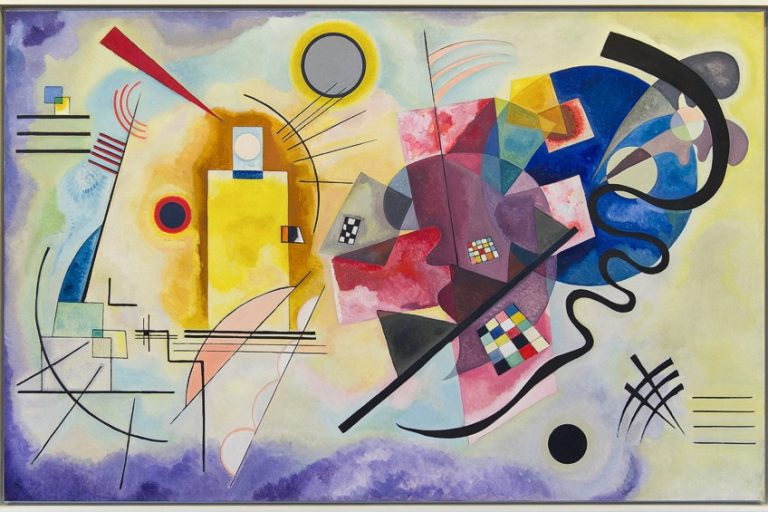Famous Italian Painters – Leading Lights of the Renaissance
Italy’s artists lived in a nation that has an illustrious art culture. With their original, elegant, and innovative aesthetic ideals, famous Italian painters throughout the last few centuries have served vital contributions in developing the art community. Prominent Italian Renaissance artists not only left a mark in their own country but also greatly inspired the arts of the entire Western civilization.
Table of Contents
- 1 Our List of Famous Italian Painters
- 1.1 Giotto Di Bondone (1267 – 1337)
- 1.2 Giovanni Bellini (1430 – 1516)
- 1.3 Sandro Botticelli (1445 – 1510)
- 1.4 Leonardo da Vinci (1452 – 1519)
- 1.5 Michelangelo Buonarotti (1475 – 1564)
- 1.6 Raphael (1483 – 1520)
- 1.7 Titian (1488 – 1576)
- 1.8 Sofonisba Anguissola (1535 – 1625)
- 1.9 Caravaggio (1571 – 1610)
- 1.10 Artemisia Gentileschi (1593 – 1656)
- 2 Frequently Asked Questions
Our List of Famous Italian Painters
Many famous Italian paintings are among the most valuable and admired artworks in the entire history of art. Famous Italian artworks by masters such as Leonardo da Vinci and Michelangelo have still not been surpassed by other artists centuries after they were produced. Let us now take a deep dive into our list of Italy’s artists that are the most highly revered in the world of art. These Italian Renaissance artists set the high benchmark that would impact Western society for generations to come.
Giotto Di Bondone (1267 – 1337)
| Full Name | Giotto Di Bondone |
| Birthplace | Vicchio, Italy |
| Birthdate | c. 1267 |
| Date of Death | 8 January 1337 |
Giotto Di Bondone is regarded as among the foremost influential painters in the history of Western art. Many of the fixations and issues of the Italian High Renaissance were preempted by a century in his works, which heralded a new age in painting that blended together spiritual heritage and the burgeoning notion of Renaissance Humanism.
Furthermore, his impact on European art was so profound that many scholars agree it was unrivaled until Michelangelo took over his role two centuries later.
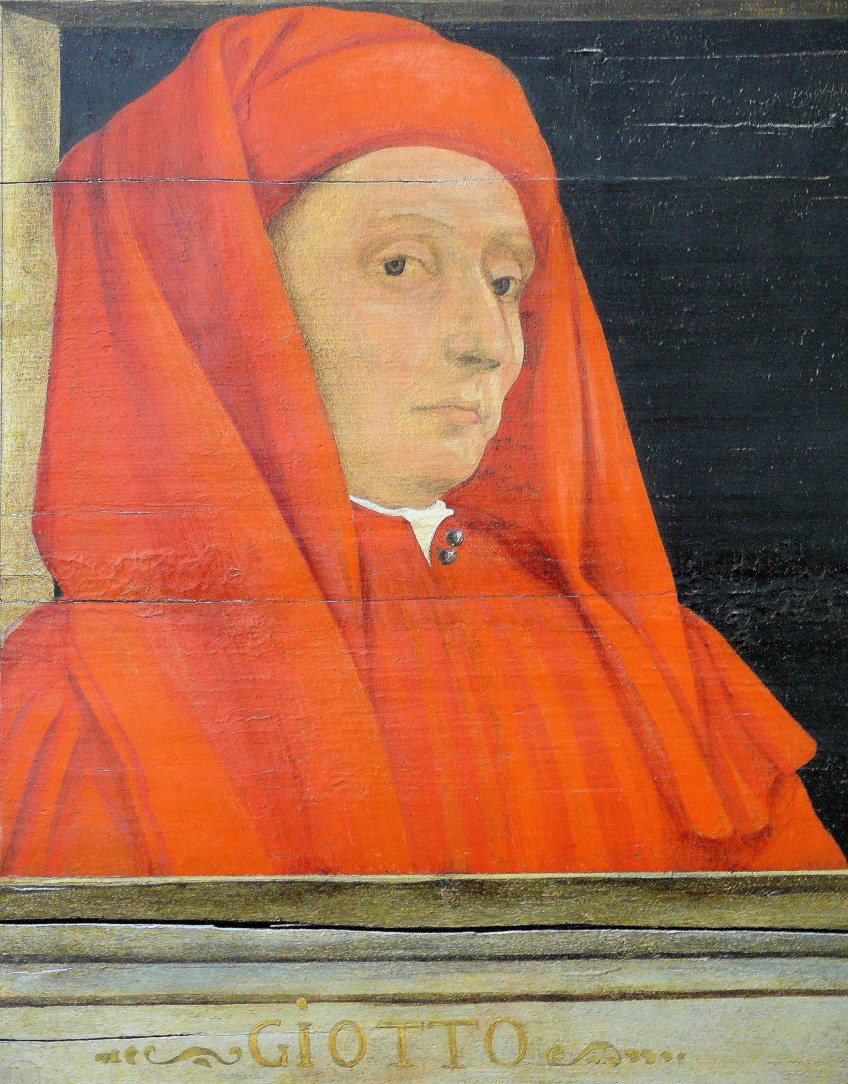
Giotto is most renowned for exploring the limitations of viewpoint and visual space, bringing a fresh feeling of reality to his theological stories. His concern in humanism led him to investigate the contradiction between biblical imagery and lay worshipers’ everyday lives, bringing people nearer to Heaven by creating things more meaningful to their life experiences.
His people were so imbued with an expressive intensity not before seen in fine art, while his structural surroundings were depicted using optical rules of scale and proportion.
Giotto, regarded as one of the first famous Italian painters, introduced a fresh feeling of humanism and expression to middle ages art practices. After his involvement, “flat” Christian artworks started to be regarded as lifeless and devoid of human emotion by innovative artists.

Through his meticulousness, Giotto’s “new naturalism” accentuated its humanity. His characters were created in three-dimensional space using movements and expressions, as well as detailed clothing and furniture elements. Despite their devotion to Christ, his figures are at the heart of his storytelling.
Giotto was a well-known artist during his lifetime.
This was primarily owing to the famed Italian poet Dante, who declared him the most significant Italian artist, elevating him beyond even Cimabue, who was previously regarded as the foremost genius of 14th-century Italian painting.
A few famous Italian paintings by this artist include:
- Isaac Blessing Jacob (1295)
- Crucifix (1289)
- Celebration of Christmas at Greccio (1300)
Giovanni Bellini (1430 – 1516)
| Full Name | Giovanni Bellini |
| Birthplace | Venice, Italy |
| Birthdate | c. 1430 |
| Date of Death | 29 November 1516 |
Few painters in the annals of art have had as significant an impact as the Venetian, Giovanni Bellini. Bellini is renowned for imbuing his theological and mythological settings with a humanistic aspect. He was also at the forefront of advancements in oil painting, abandoning the egg and water tempera process in favor of using oil paints to produce a heightened feeling of panoramic ambiance.
While the depicted landscape was traditionally regarded with disdain by the creative aristocracy, Bellini handled it with attention and respect to details that gave it, albeit long later, a new generic legitimacy.
Aside from his own remarkable contributions to the Renaissance tradition, he mentored Titian, who, surprisingly, outperformed his majestic and elegant Venetian mentor. Though a devoted Venetian, Bellini was receptive to other influences from both Northern Europe and Italy.
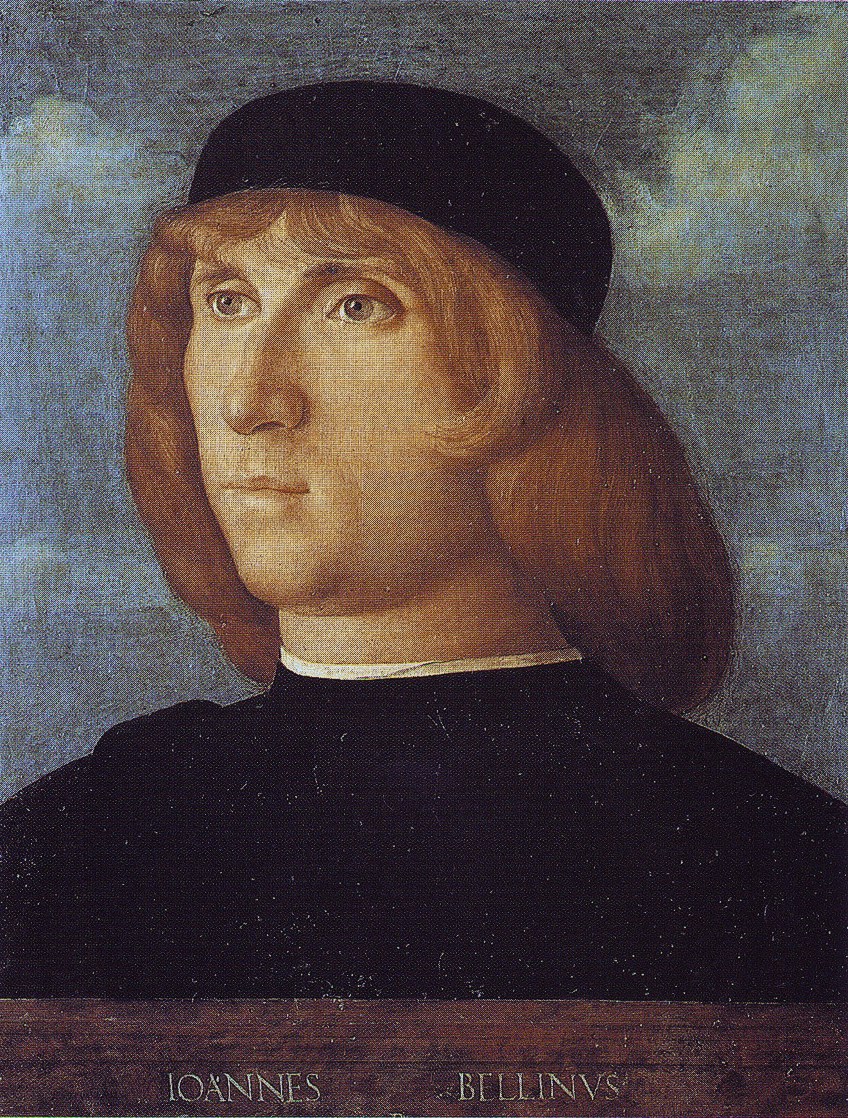
His oeuvre reflects fresh anatomical theories as well as a determination to explore the creative potential of oil paint, which was just imported into Italy via the harbor of Venice. Bellini, despite his staunch Christian beliefs, was adamant about utilizing painting to depict the intricacies of the human body. His characters, both human and holy, were portrayed with a softness of touch that gave his spiritual and legendary tales a fresh human softness.
Bellini’s experimentation with oils simply contributed to his work’s overall grace.

He honed an oil method that allowed for the most delicate color gradations. His brilliant paintings established the standard by which others would be measured. Bellini, apart from many of his colleagues, had a deep appreciation for the outdoor landscape. The natural environment was normally supposed to provide tremendous impact to the painted tale, but Bellini’s scenes, which were modeled on the wide countryside where he grew up, were barren.
Bellini’s exceptional control of color and light allowed him to contribute to the atmospheric mood of his compositions in conjunction with his nuanced representation of garment and skin coloring.
A few famous Italian artworks by this artist include:
- The Agony in the Garden (1459)
- Pietà (1460)
- The Sacred Conversation (1487)
Sandro Botticelli (1445 – 1510)
| Full Name | Alessandro di Mariano di Vanni Filipepi |
| Birthplace | Florence, Italy |
| Birthdate | 1445 |
| Date of Death | 17 May 1510 |
Sandro Botticelli was possibly the finest humanist artist of the Early Renaissance, although much of his life and inspirations are unknown to us now. His works depict the height of the Medicis’ Florence’s cultural blossoming, an affluent civilization that supported the advancement of artwork, literature, and philosophy.
Throughout his lengthy career, he was contracted to create a wide range of topics, but at the core of his oeuvre, he always aimed for elegance and purity, traits embodied by the deity, the focus of many of his most renowned masterpieces.
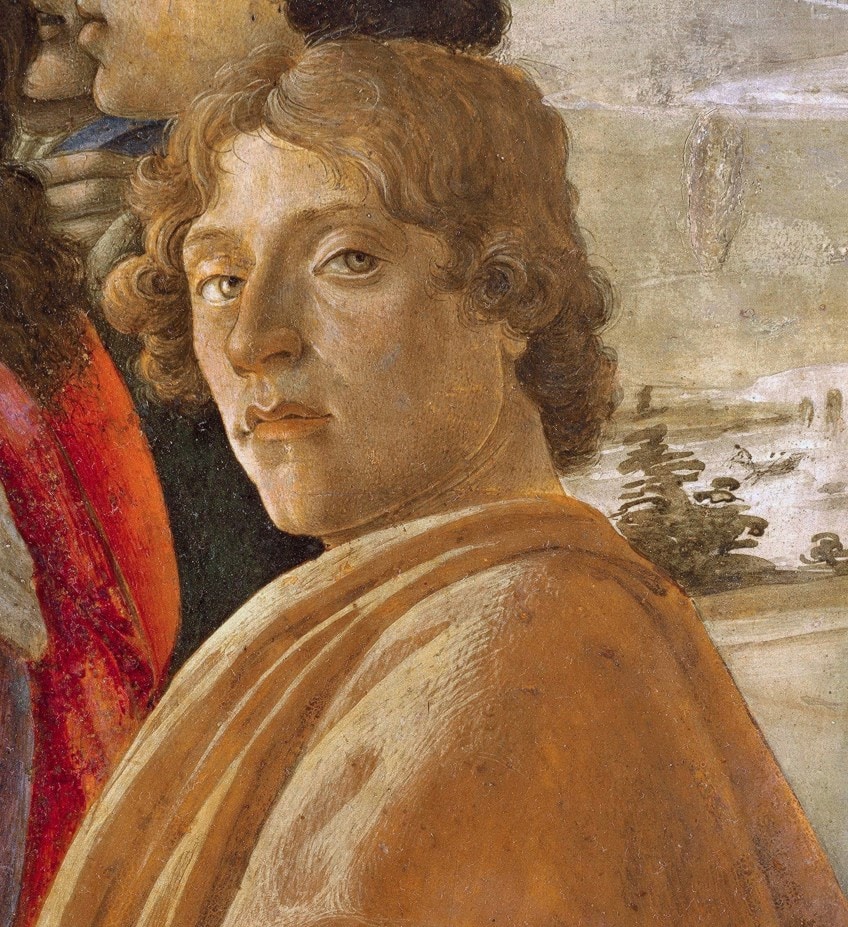
Botticelli was among the first painters from the West since the ancient period to illustrate non-religious content, encouraged by the renaissance of Greco – Roman ideals in Florence at the period. The notion that paintings may be enjoyed for their own sake rather than only for theological objectives was a watershed moment in the Western art world.
Botticelli crossed the divide between the Middle ages Gothic style of art and the nascent Humanist Authenticity.
His work included a developing understanding of human physiology and perspectives, yet it preserves a creative character not present in the works of the next High Renaissance painters, or for a long time thereafter. In his works, he strove to reach the notion of perfection, and he abandoned naturalism if a more fanciful form fit the broader artistic notion better.

During an era when Christian artwork was mostly figural, his discovery of emotive depth in conventional Christian topics was exceptional. He portrayed his themes in a way that made them relevant to the average individual, stressing their human ties. This is especially noticeable in his early Madonna and Child works, where there is love and sympathy between the mother and the child that is characteristic of Botticelli.
A few famous Italian artworks by this artist include:
- Adoration of the Magi (1476)
- Primavera (1482)
- The Birth of Venus (c. 1485)
Leonardo da Vinci (1452 – 1519)
| Full Name | Leonardo di ser Piero da Vinci |
| Birthplace | Anchiano, Italy |
| Birthdate | 15 April 1452 |
| Date of Death | 2 May 1519 |
Leonardo da Vinci was an artist, designer, innovator, and science enthusiast. His inherent talent spanned so many fields that he personified the title “Renaissance man.” Today, he is most renowned for his art, which, according to Da Vinci, was inextricably linked with nature and science.
He was mostly self-educated, and he kept dozens of hidden journals packed with ideas, insights, and hypotheses on subjects ranging from aerodynamics to physiology.
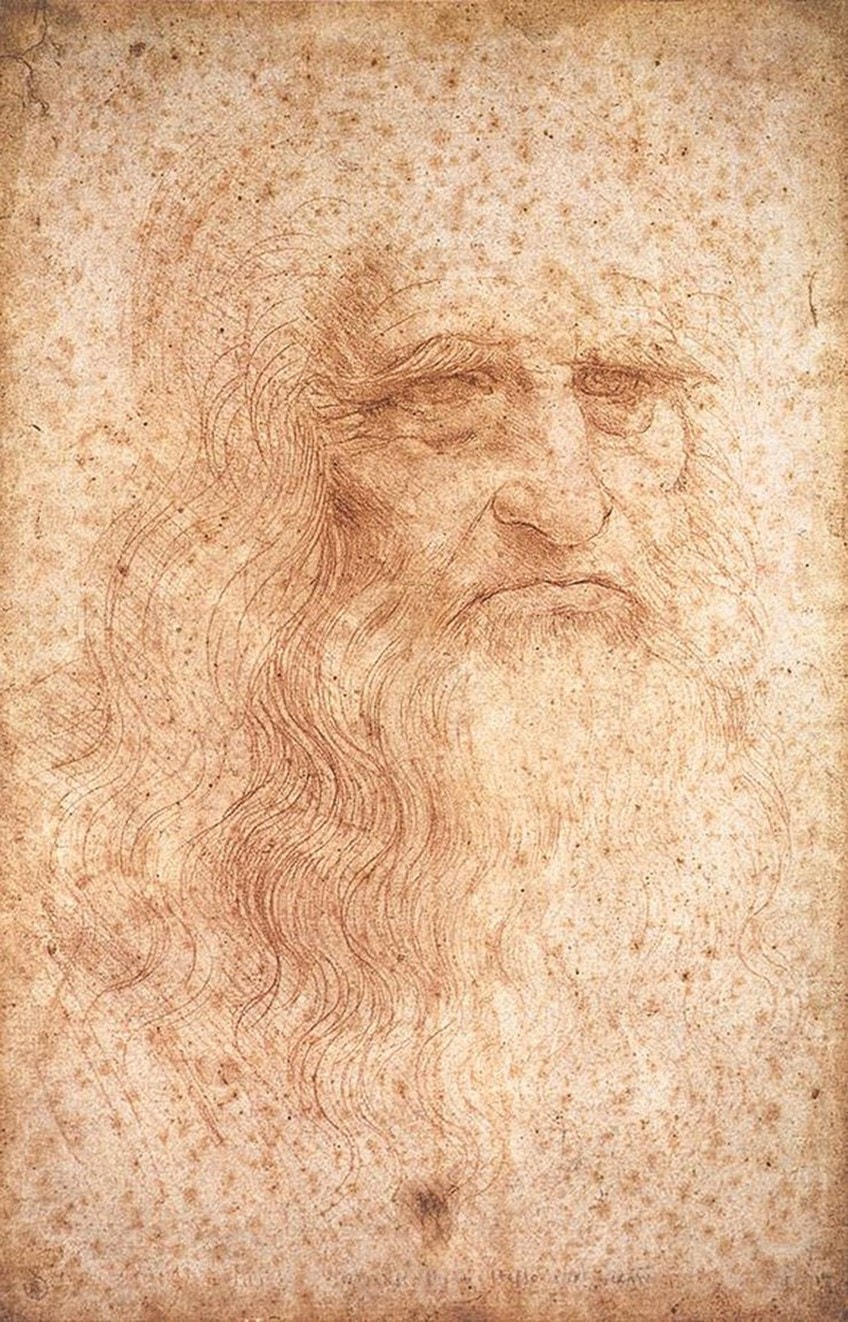
However, the remainder of the world was only just starting to communicate information through books constructed with movable type, and the notions described in his notes were frequently difficult to comprehend. As a consequence, while he was praised as an excellent painter at the time, his colleagues did not always recognize the blend of intelligence and creativeness that enabled him to produce (at least theoretically) creations including rudimentary bicycle and helicopter designs, as well as an airplane design based on the anatomy of a bat.
Although few of da Vinci’s canvases and statues have survived—partly due to his limited output – two of his existing pieces are among the world’s most famous Italian paintings, being The Last Supper (1486) and the Mona Lisa (1517).
Numerous elements could be claimed to connect da Vinci’s disparate interests. Most importantly, he held that seeing was humanity’s most significant sense and that “saper vedere” was essential to properly experience all elements of existence.

He considered art and science as complementary rather than diametrically opposed fields, and he believed that ideas developed in one could help the other. Da Vinci probably did not finalize a substantial percentage of his artworks and undertakings due to his wide range of pursuits.
A few famous Italian artworks by this artist include:
- Mona Lisa (1517)
- The Last Supper (1486)
- Lady with an Ermine (1490)
Michelangelo Buonarotti (1475 – 1564)
| Full Name | Michelangelo Buonarotti |
| Birthplace | Caprese, Italy |
| Birthdate | 6 March 1475 |
| Date of Death | 18 February 1564 |
Michelangelo Buonarroti was an Italian Renaissance artist, architect, poet, and sculptor widely regarded as producing some of the most famous Italian artworks of the time. Before training in the sculpting grounds of the Medici dynasty, he was an assistant to an artist.
What ensued was a tremendous life as an artist, renowned for his creative brilliance.
Michelangelo learned traditional sculpting in the royal palace gardens of the Medici family’s Florentine ruler Lorenzo de Medici. At the suggestion of his master, he was given this exceptional chance after just a year in Ghirlandaio’s studio.
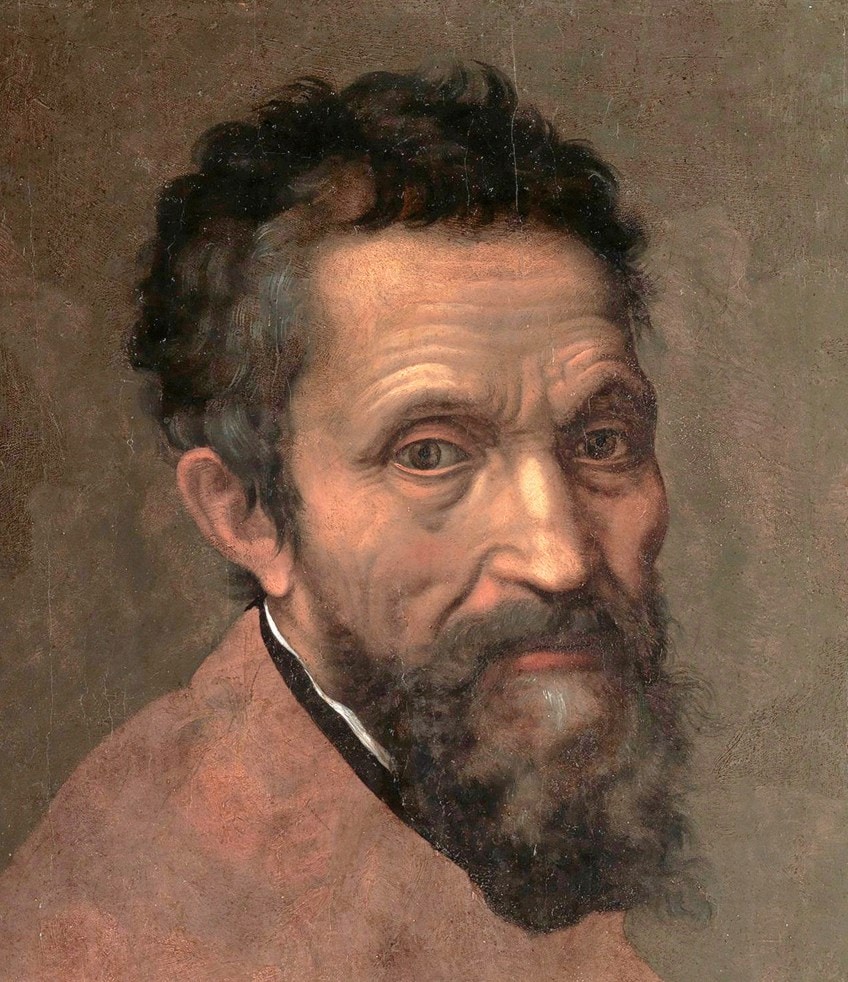
This was a rich period for Michelangelo; his time with the family gave him exposure to Florence’s upper crust, enabling him to train under sculptor Bertoldo di Giovanni and expose him to important poets, academics, and knowledgeable humanists. He also gained exceptional authorization from the Catholic Church to examine corpses for anatomical understanding, despite the fact that contact with corpses was harmful to his health.
These inspirations together set the framework for Michelangelo’s individual style: muscular accuracy and reality coupled with almost poetic elegance.
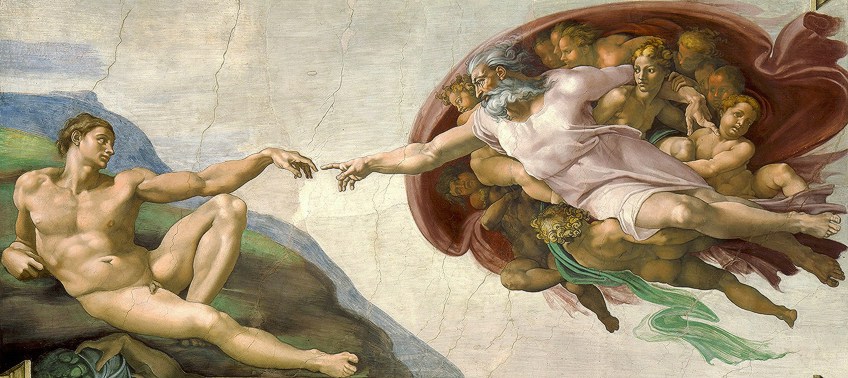
While Michelangelo’s bright intellect and prodigious abilities garnered him the respect and funding of Italy’s rich and privileged men, he was not without his adversaries. He had a volatile temperament and a short fuse, which resulted in acrimonious interactions, frequently with his employers. This not only landed Michelangelo in difficulty, but it also caused considerable unhappiness for the artist, who was continually striving for excellence but unwilling to settle.
A few famous Italian paintings by this artist include:
- The Creation of Adam (1512)
- The Last Judgment (1541)
- Tondo Doni (1506)
Raphael (1483 – 1520)
| Full Name | Raffaello Sanzio da Urbino |
| Birthplace | Urbino, Italy |
| Birthdate | 1483 |
| Date of Death | 1520 |
Born Raffaello Sanzio da Urbino, you may know this famous Italian artist by the name of Raphael. Giovanni Santi, Raphael’s father, was an artist for the Duke of Urbino. At the Duke’s court, Giovanni instructed the youthful Raphael on rudimentary art methods and introduced him to the ideals of humanistic thinking. His father passed away in 1494, while Raphael was just 11 years of age.
Raphael subsequently took over management of his father’s business, which was a demanding responsibility.
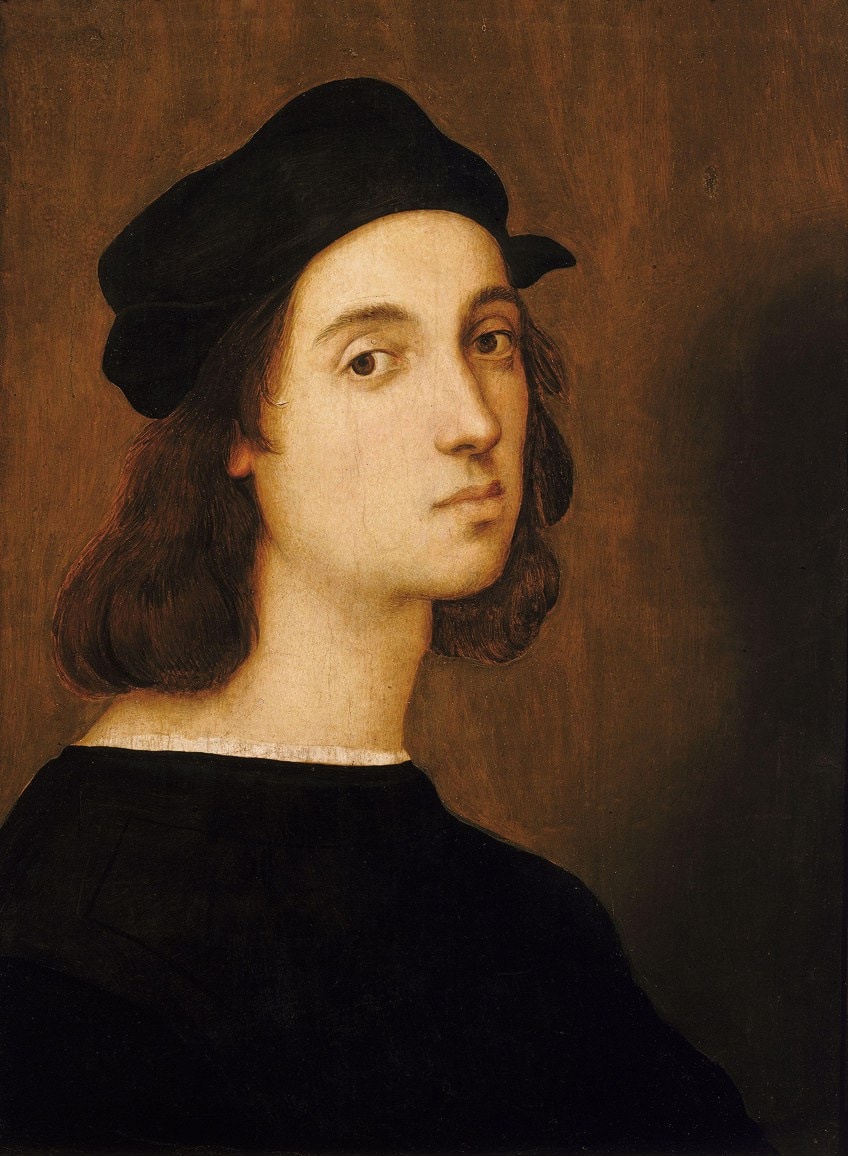
Raphael’s performance in this capacity quickly eclipsed that of his father, and he was soon regarded as one of the best artists in the city. He was even appointed as a youngster to work for the Church of San Nicola. In 1500, Raphael was recruited to become an assistant to a famous painter named Pietro Vannunci in Perugia. Perugino was engaged in fresco paintings in the Collegio del Cambio at the time.
Raphael’s training lasted for four years and allowed him to gather both expertise and hands-on knowledge. Raphael established his own distinct style of painting throughout this time. Raphael left Perugino’s tutelage in 1504 and traveled to Florence, where he was attracted to the masterpieces of famous Italian painters such as Leonardo da Vinci, Fra Bartolommeo, and Michelangelo.
These inventive Italian Renaissance painters had attained a whole new degree of depth in their compositions, according to Raphael.

Raphael was able to establish an even more detailed and emotive personal manner than was visible in his early works by meticulously examining the nuances of their works. In 1508 Raphael came to Rome to work in the Vatican Room. Raphael conveyed the humanistic ideals he received as a kid in the Urbino palace in the Vatican’s fresco cycle.
A few famous Italian artworks by this artist include:
- The School of Athens (1509)
- Sistine Madonna (1512)
- Galatea (1514)
Titian (1488 – 1576)
| Full Name | Tiziano Vecelli |
| Birthplace | Pieve di Cadore, Italy |
| Birthdate | c. 1488 |
| Date of Death | 27 August 1576 |
As a youth, Titian became an artist’s student in Venice, where he worked under Giovanni Bellini, Sebastiano Zuccato, and Giorgione before striking out on his own. With the conclusion of Assumption of the Virgin in 1518, Titian established himself as one of Venice’s finest painters.

He quickly found himself painting pieces for nobility, including Charles V and King Philip II of Spain. Titian was also commissioned by Pope Paul III to create paintings of himself and his grandchildren. Many of the creative figures in society visited Titian’s Venetian house. He was particularly close to the author Pietro Aretino. Aretino is claimed to have assisted Titian in obtaining some of his contracts. Jacopo Sansovino, an architect and sculptor, was another regular guest.
Titian produced portraits of significant personalities of the day during the course of his career.
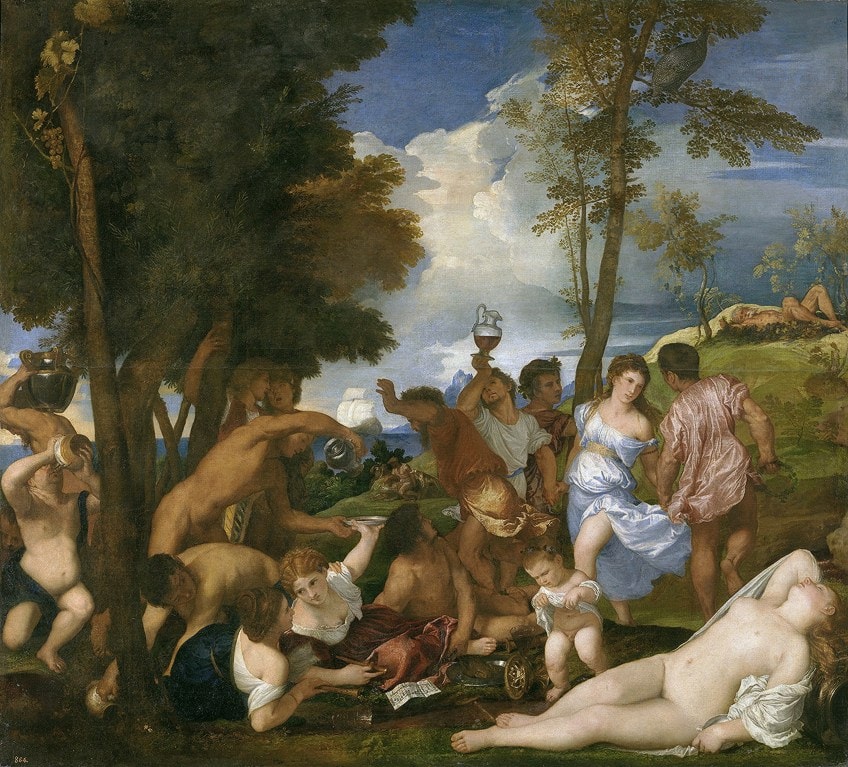
He produced two pieces depicting Pope Paul III and lived in the Vatican for six months while working on them. In 1548, he journeyed to Charles V’s court and produced his portrait. Titian’s final works were more religious and mythical in nature. Titian painted till his death in Venice in 1576. He was said to have died as a result of the plague epidemic. A few months afterward, Orazio, his son, died of the same ailment. Pomponio, his other son, sold Titian’s house and goods in 1581.
Titian has influenced several generations of artists by the number of masterpieces he left behind.
A few famous Italian paintings by this artist include:
- Assumption of the Virgin (1518)
- The Bacchanal of the Andrians (1523-1526)
- Venus of Urbino (1538)
Sofonisba Anguissola (1535 – 1625)
| Full Name | Sofonisba Anguissola |
| Birthplace | Cremona, Italy |
| Birthdate | 1535 |
| Date of Death | 16 November 1625 |
Sofonisba Anguissola was the first female Renaissance painter to acquire worldwide acclaim during her life. She was able to make life-like, nuanced portraiture that was both academically stimulating and attractive. She employed self-portraits to sell and identify herself, and she then applied the same talent to producing official portraits of the Spanish royal family that demonstrated their capacity to govern.
She was hailed as a natural wonder and her works as an artistic marvel.
These observations, however, both defined her as a bizarre abnormality and rocketed her to popularity. She was also recognized for being pious and attractive, a wonderfully schooled conversationalist, proficient in music, and a captivating dancer – all of which attracted her to the Italian and Spanish nobles while without challenging traditional conventions about what females could and could not achieve.

Nevertheless, she used societal limits to her benefit, outperforming everyone and becoming one of the most recognized painters of her day. Italian painters, authors, and merchants were fascinated by art theory in the 16th century. The notion that artwork was about art ultimately was emerging. Anguissola’s works are more than just representations of the individuals she depicted.
Many of her pieces are reflections on the philosophy of creativity, inviting the audience to consider the connection that exists between the artwork, the audience, and the creator.

Painting lessons were often restricted for the daughters and sons of artists throughout the Renaissance. The majority of female painters worked for their families’ workshops, and relatively few were acknowledged for their abilities on their own. Anguissola did not fall under any of these classifications.
A few famous Italian paintings by this artist include:
- Elisabeth of Valois (1565)
- Portrait of a Young Lady (c. 1580)
- Portrait of Catalina Micaela of Spain (1579)
Caravaggio (1571 – 1610)
| Full Name | Michelangelo Merisi da Caravaggio |
| Birthplace | Milan, Italy |
| Birthdate | 29 September 1571 |
| Date of Death | 18 July 1610 |
While many of Italy’s artists obediently adhered to the exquisite balletic norms of late Mannerism paintings, Michelangelo Merisi da Caravaggio depicted biblical events as passionate and frequently gory tragedies. He presented events from the remote holy period as if they were happening now, frequently painting from real models dressed in startlingly contemporary garb.
By stressing their torn garments and unclean feet, he emphasized Christ and his disciples, the Prophets, martyrs, and priests, destitution, and shared humanity.

He also pioneered a new style of chiaroscuro, employing strong contrasts of light and shadow to accentuate nuances of motion or facial expressions: an outstretched arm, a look of anguish or desire. His impact on the development of Western art has been enormous, and it has not been restricted to the sphere of paintings alone.
Many important artists in the medium of film, including Martin Scorsese, have been significantly influenced by his spectacular sense of staging and inventive manipulation of lights and shadows.

Caravaggio’s legacy was tainted by the volatile and inevitably fatal events of his private life, both during his life and in the wake of his early demise. He killed a person and committed a serious assault during the height of his popularity in Rome, and as a result, he wasted most of his subsequent career – during which he also produced many of his most riveting pieces – as a refugee from punishment. He may be defined as the ideal Old Master for a generation obsessed with popularity and enslaved to the worship of a condemned self-destructive brilliance.
In reality, he was a more delicate, compassionate, and philosophically challenging creator than the mythology that has developed up around him indicates.
A few famous Italian paintings by this artist include:
- The Beheading of Saint John the Baptist (1608)
- The Calling of Saint Matthew (1600)
- Death of the Virgin (1606)
Artemisia Gentileschi (1593 – 1656)
| Full Name | Artemisia Gentileschi |
| Birthplace | Rome, Italy |
| Birthdate | 8 July 1593 |
| Date of Death | c. 1653 |
Artemisia Gentileschi was among the first woman painters to attain acclaim in the 17th century, generations ahead of her time. Her works were some of the most dynamic and energetic of her age, following the lead of Caravaggio, and she became noted for her naturalism, adept use of chiaroscuro, and for putting females and their tales at the heart of all her works.

Her paintings give a distinct personal viewpoint on the century’s social and cultural standards, norms that she frequently purposefully flipped, utilizing her status as a painter to remark on society’s male-dominated character and to place an alternate accent on female autonomy. Although Artemisia Gentileschi’s art is aesthetically similar to that of Orazio, her father, and Caravaggio, her works lay a stronger focus on reality than her progenitors.
Her works are also more lively, and she painstakingly perfected her utilization of color and texture throughout her career, becoming noted for her lush gemstone colors and lifelike skin tones.
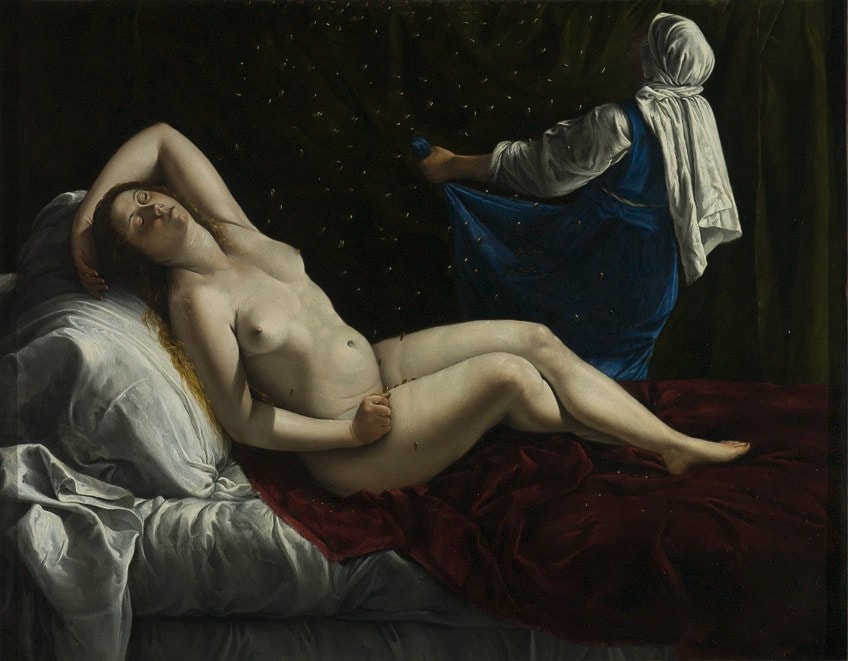
Gentileschi disrupted standard representations of biblical and legendary female characters, portraying them as self-motivated protagonists competent in making their own decisions instead of passive receivers of the male perspective. In doing so, she represented them in a totally new light, granting them the strength that previous painters had refused them. Her adolescent sexual abuse influenced much of her artwork, and issues of power abuse, assault, and brutality pervade many of her works. Producing these motifs most likely helped her to absorb the anguish of her attack as well as seek retribution and restitution via her paintings.
A few famous Italian artworks by this artist include:
- Susanna and the Elders (1610)
- Danae (1612)
- Judith Beheading Holofernes (1620)
Many great Italian paintings are among the most precious and admired pieces of art in all of history. Famous Italian masterpieces by geniuses such as Leonardo da Vinci and Michelangelo have yet to be equaled by other painters centuries after their creation. Let us now take a deep dive into our list of Italy’s most recognized painters in the world of art. These Italian Renaissance painters established a high standard that would have an influence on Western civilization for decades to come.
Take a look at our Italian artists webstory here!
Frequently Asked Questions
Why Are Famous Italian Painters Important?
The painters of Italy lived in a country with a rich art tradition. Famous Italian artists have made significant contributions to the development of the art world throughout the previous few centuries with their original, elegant, and inventive aesthetic principles. Prominent Italian Renaissance painters not only made their imprint in their own nation but also had a significant influence on the arts of the entire Western civilization.
Which Period Was the Most Important for Italian Art?
Famous Italian Renaissance artists are mostly responsible for the masterpieces that are revered globally today. The Renaissance, or the revival of Science and Art, marks the zenith of artistic excellence, resurrected and fearlessly carried out after a millennium in the wilderness. Scholars from all socioeconomic backgrounds first fueled the desire to relive the glory days of antiquity.
Isabella studied at the University of Cape Town in South Africa and graduated with a Bachelor of Arts majoring in English Literature & Language and Psychology. Throughout her undergraduate years, she took Art History as an additional subject and absolutely loved it. Building on from her art history knowledge that began in high school, art has always been a particular area of fascination for her. From learning about artworks previously unknown to her, or sharpening her existing understanding of specific works, the ability to continue learning within this interesting sphere excites her greatly.
Her focal points of interest in art history encompass profiling specific artists and art movements, as it is these areas where she is able to really dig deep into the rich narrative of the art world. Additionally, she particularly enjoys exploring the different artistic styles of the 20th century, as well as the important impact that female artists have had on the development of art history.
Learn more about Isabella Meyer and the Art in Context Team.
Cite this Article
Isabella, Meyer, “Famous Italian Painters – Leading Lights of the Renaissance.” Art in Context. November 4, 2021. URL: https://artincontext.org/famous-italian-painters/
Meyer, I. (2021, 4 November). Famous Italian Painters – Leading Lights of the Renaissance. Art in Context. https://artincontext.org/famous-italian-painters/
Meyer, Isabella. “Famous Italian Painters – Leading Lights of the Renaissance.” Art in Context, November 4, 2021. https://artincontext.org/famous-italian-painters/.


